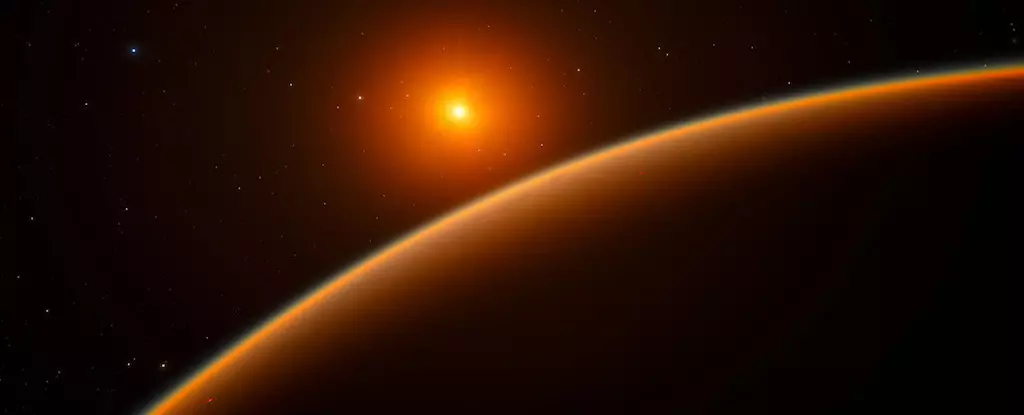Recent research has ignited excitement in the astronomical community, suggesting that Earth-like exoplanets might be far more prevalent in our Milky Way galaxy than scientists previously assumed. Dr. Weicheng Zang and his team at Harvard and the Smithsonian Center for Astrophysics have made a compelling discovery that challenges long-standing beliefs about planetary distribution. They identified a ‘super-Earth’—a planet larger than Earth but smaller than Neptune—located at a distance from its star that was previously thought to be dominated exclusively by gas giants. This revelation provides a refreshing perspective in the realm of exoplanetary studies and the ongoing quest to characterize celestial bodies similar to our own planet.
The Revelation of Super-Earths
Traditionally, super-Earths were detected primarily in close orbits around their host stars, leading astronomers to underestimate their prevalence in regions more akin to those occupied by the gas giants of our Solar System, like Jupiter and Saturn. However, findings from Zang’s team draw attention to the fact that these intriguing planets are not just the hot, close cousins of Earth; they can inhabit a wide variety of orbits. The study indicates that approximately one in three stars in our galaxy likely hosts a super-Earth in a Jupiter-like orbit. This means that rather than being the exception, super-Earths may be the norm.
The broader implications are significant. Not only does this increase the likelihood of finding potentially habitable worlds, but it also suggests that the processes governing planet formation are more complex than previously thought. Co-author Andrew Gould emphasizes the variability and complexity of planetary demographics that the study has uncovered, pointing out the notable excesses and deficits in planetary sizes that underline the non-uniformity of these celestial distributions.
Understanding Gravitational Microlensing
One of the groundbreaking methodologies employed in this study is gravitational microlensing. This phenomenon occurs when a massive object, such as a star or planet, passes in front of a more distant light source, distorting the light and creating a temporary spike in brightness. This technique is particularly useful for detecting planets that may be orbiting far from their stars, a region that is typically shrouded in challenges for observation. The event known as OGLE-2016-BLG-0007 served as a focal point in the researchers’ analysis, showcasing the effectiveness of this approach in revealing hidden planetary bodies that conventional methods might overlook.
By analyzing data from the Korea Microlensing Telescope Network (KMTNet), which encompasses telescopes in Australia, Chile, and South Africa, the researchers amassed an unprecedented volume of exoplanet data. They found that the diversity in planet sizes previously identified in tight orbits around stars extends to those in larger, more distant orbits, reinforcing the notion that a variety of planetary types thrive throughout the galaxy.
Challenging Previous Assumptions
The implications of this study challenge not only the understanding of super-Earths but also the broader perception of planetary formation and evolution. The conventional wisdom that planets predominantly form close to their stars is being upended. According to co-author Jennifer Yee, the abundance of super-Earths in orbits that mirror those of gas giants indicates that we are only beginning to scratch the surface of our galaxy’s planetary demographics.
The fact that previously thought ’empty spaces’ in planetary orbits can house robust populations of super-Earths hints at a rich tapestry of planetary formation mechanisms. As these findings accumulate, it becomes increasingly clear that the Milky Way houses a diverse range of planetary systems that defy our traditional understanding of how planets should distribute and adapt based on their host stars.
The Road Ahead: Data Collection Challenges
While the findings are exhilarating, they come with an acknowledgment of the challenges inherent in future research. Richard Pogge, another contributor to the study, underscores the difficulty of identifying microlensing events, particularly those that reveal planets. The rarity of these occurrences complicates the task of gathering sufficient data to form a comprehensive picture of the planetary landscape.
This challenge underscores a crucial point: while we may have exciting new theories and findings, they must be buttressed with more empirical evidence. The path forward necessitates continued dedication to innovative observational methods and collaborations across global astronomical communities. The era of exoplanet exploration is only just beginning, and as we refine our techniques, we may unlock secrets about our universe that are currently beyond our reach.
With a burgeoning array of super-Earths awaiting discovery, the galaxy’s vastness becomes even more tantalizing, suggesting that our quest for understanding the cosmos has only just started. The future is bright for exoplanet research, as each new finding opens up possibilities for both scientific advancement and the age-old question of our place in the universe.


Leave a Reply